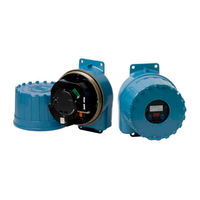Emerson Micro Motion 9739 MVD Manuals
Manuals and User Guides for Emerson Micro Motion 9739 MVD. We have 2 Emerson Micro Motion 9739 MVD manuals available for free PDF download: Configuration And Use Manual
Emerson Micro Motion 9739 MVD Configuration And Use Manual (254 pages)
Brand: Emerson
|
Category: Transmitter
|
Size: 5 MB
Table of Contents
Advertisement
Emerson Micro Motion 9739 MVD Configuration And Use Manual (202 pages)
Brand: Emerson
|
Category: Transmitter
|
Size: 2 MB
Table of Contents
Advertisement
Related Products
- Emerson Micro Motion Transmitters and Discrete Controllers Series 3000
- Emerson Micro Motion
- Emerson Micro Motion ELITE
- Emerson Micro Motion 3300
- Emerson Micro Motion 2500
- Emerson Micro Motion 2000 Series
- Emerson Micro Motion 4200
- Emerson Micro-Motion 2400S
- Emerson Micro Motion 2400S
- Emerson Micro Motion IFT9701

